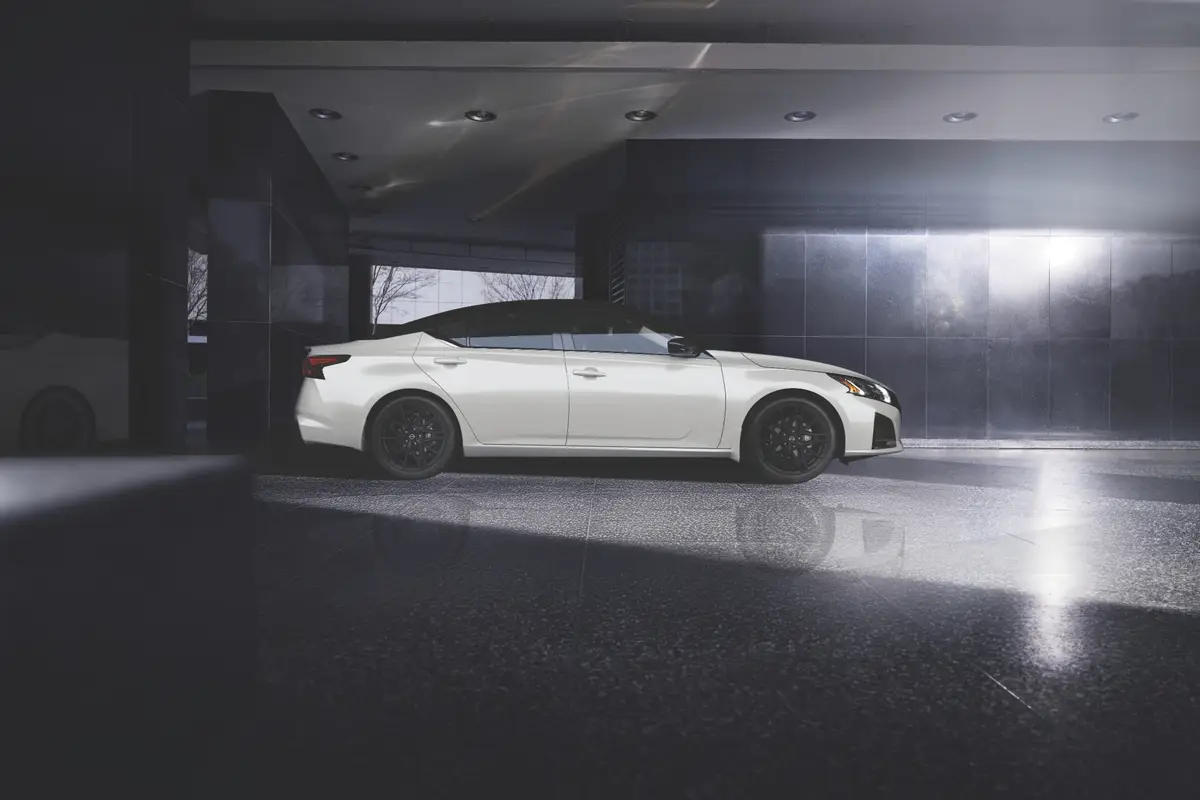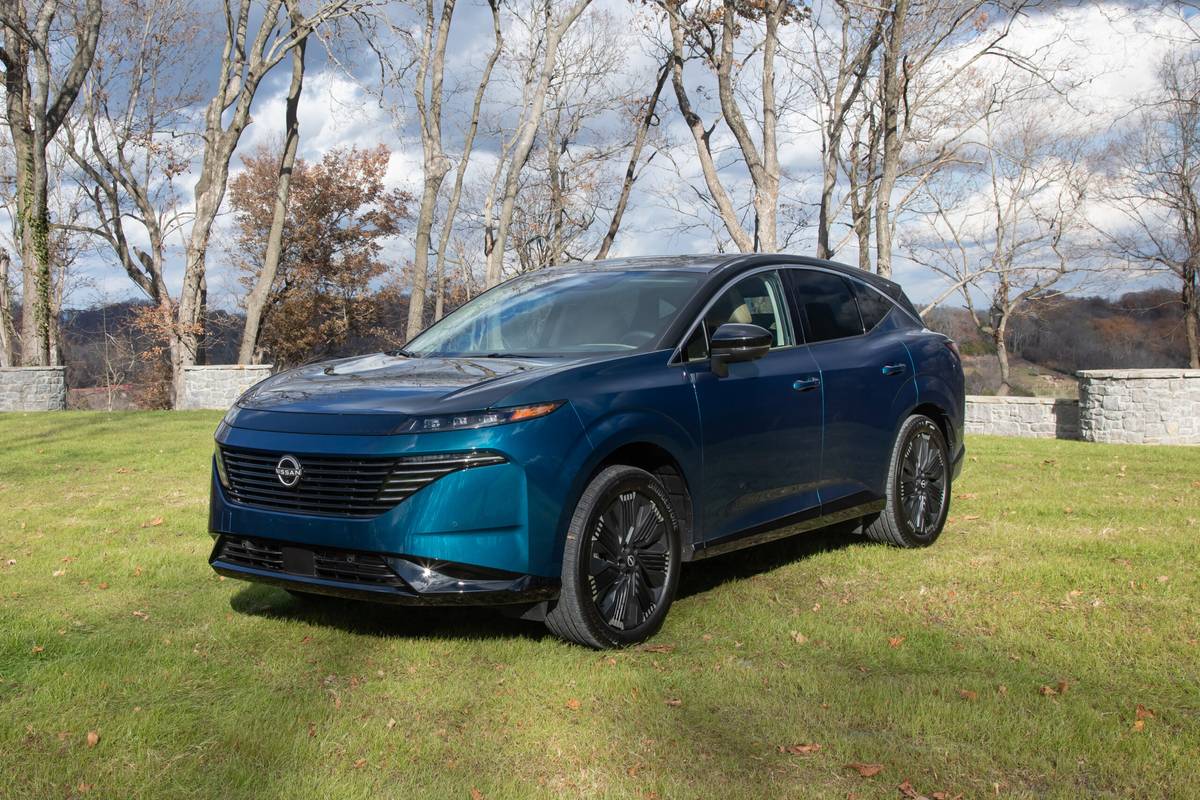The Morning Call and Mcall.com's view
In the past couple of years there has been an increase in the number of four-wheel-drive passenger cars in the marketplace. Why? I’m not quite sure but it certainly must have something to do with the security of a four-wheel- drive system in adverse driving conditions.
What ever the reason, there are a number of these vehicles available right now and more scheduled to come along. So, for those interested in this type of vehicle, it looks like there will be more of a choice in the not-too-distant future.
The world of four-wheel-drive today runs the gamut from large work trucks to small sports cars. And although the bottom line on all four-wheel-driv e vehicles is traction, that is not necessarily the whole story. A portion of four-wheel-drive vehicles is used strictly for work, but, perhaps somewhat surprisingly, most are bought for personal use; including the bigger pickup trucks and utility vehicles.
Back in the 1940s, the Jeep of World War II fame could be credited with popularizing four-wheel-drive. From then on it was all uphill. By the 1970s the most popular personal four-wheeler was the utility vehicle, a vehicle looking like a tall-wide station wagon built on a truck chassis and used for hauling people on and off the road and heavy duty towing. The big utility vehicle, however, came on hard times with the sharp increase in the price of gasoline in that decade. Not only did they look like trucks, they ate fuel like trucks.
The decline in popularity with the big utility vehicles was directly responsible for the introduction of small, more fuel-efficient utility vehicles and pickups and somewhat indirectly responsible for the growth of the smaller station wagon/passenger car type vehicles.
This in some roundabout way brings us to the latest American entry into the four-wheel-drive passenger car segment of the market, the Ford Tempo All- Wheel-Drive. Notice that Ford calls this car an All-Wheel-Drive vehicle, rather than a four-wheel-drive vehicle. The reason that I point this out is that other manufacturers are doing the same thing and in years to come the whole market will probably be known by this name. But for the present, let’s stick to four-wheel-drive.
Although the Tempo AWD is a new entry in this field, Ford is by no means without its knowledge of four-wheel-drive. Back during World War II the original General Purpose scout (known affectionately as the jeep) was built by several firms including Ford. Ford also has built its F-series pickups and Broncos for many years. In addition, Ford’s European operation offers several passenger cars with four-wheel-drive. Perhaps the Europeans know something we don’t know, or are just a little more carried away with this particular drive configuration.
Even in the world of four-wheel-drive passenger cars there are different applications and different reasons for using such a system. The late st and most sophisticated used of four-wheel-drive is a full-time system for sports cars and sport sedans. Most others use four-wheel-drive on a part-time basis as a traction enhancer. And in essence, this is the type of system used on the Tempo AWD.
Tempo’s part-time system proved to be one of the easiest of all systems to use. It is engaged and disengaged by the flip of a rocker switch on the dash. Very simple, but you do have to use a little discretion. It can be engaged at normal highway speeds but the wheels must be straight ahead and the road conditions warrant its use. (Also, the engine must be running for the transfer case to shift.) It is a system to be used on sand, snow, mud or other low- traction situations.
It is not recommended for use on normal highway surfaces and frequent cornering on dry, hard surfaces (such as the case with a full-time system). And the reason for this is that the AWD transfer case (when engaged in four- wheel-drive)d livers power to the front and rear axles without differential action. Like some other part-time systems, it does not compensate for the difference in front and rear axle speeds that can occur during cornering or varied road conditions. As the owner’s manual points out using the AWD on dry pavement could result in increased tire wear, damage to the drive train and decreased fuel economy.
All this simply means that it should be used when the driving surface is bad and not used when it isn’t. Testing this vehicle in the middle of summer does, of course, have a certain drawback; there is no opportunity to test its traction on snow, ice and slush. Fortunately (if you want to call it that), I did drive it for several hours through heavy rains and while I am not quite sure the Tempo’s front-wheel-drive system would not do equally as good a job, there was a certain amount of security: again, one of the traditional selling points of four-wheel drive.
Other major components of the Tempo AWD are the three-speed automatic transmission (featuring a fluid-link converter for smooth operation) and the 2.3-liter/140-cubic-inch high specific output (HSO) four-cylinder engine with electronic fuel injection. That’s the whole works – no substitutes.
The 2.3 HSO engine is rated at 94 horsepower at 4,000 rpm and 126-foot pounds torque at 3,200 rpm. Performance is adequate though far from startling. I mean if you want to go, you have to keep your foot in it at all times. (This engine is also standard in the front-wheel drive Tempo Sport GL and performs quite well in that. However the Sport GL is not carrying the extra weight of the AWD.) All-in-all, I think the AWD would be much happier with a few more horses or a bigger engine.
Fuel mileage for the test vehicle averaged 22 miles per gallon for highway driving (mostly two-wheel-drive with some four-wheeling mixed in) and 16 miles per gallon for city driving. Nothing great but four-wheelers (even in two- wheel-drive) aren’t generally noted for high fuel mileage. On the bright side, though, unleaded regular can be used.
Aside from the four-wheel-drive system, the Tempo is an unpretentious little car that can carry five passengers and a fair amount of luggage in reasonable comfort. This compact has an EPA index rating of 102 cubic feet (89 passenger compartment, 13 cargo) and measures 99.9 inches in the wheelbase, 176.5, length; 68.3, width; 54.9, high, and has a curb weight of about 2,750 pounds.
Because of the extra weight underneath, handling isn’t as crisp as, say, the regular Tempo. The four-wheel independent suspension features MacPherson struts up front and parallel four-link in the rear. The ride is somewhat stiff because of the four-wheel-drive system but not unbearably so. Rather interestingly, the Tempo AWD does not sit high or look any different than conventional Tempo models.
Base price on the four-door test car came to $10,194. In addition to all of the mechanical features that go along with the AWD, standard equipment included electronic AM/FM stereo radio, sports instrument cluster, dual electric remote control mirrors, light group and a nice level of trim and appointments.
Full price on the test car, including a destination charge of $398, came to $12,774. Options include the power equipment group at $835 (power locks, 6- way power driver’s seat and power windows); the convenience group, $623 (upgraded radio with cassette, premium sound system, speed control, tilt steering wheel); rear window defroster, $145; air conditioning, $773, and clear-coat metallic paint, $91. The price also reflects discounts of $285. The Tempo AWD is covered by Ford’s 6-year/60,000-mile warranty on major components.
Latest news



